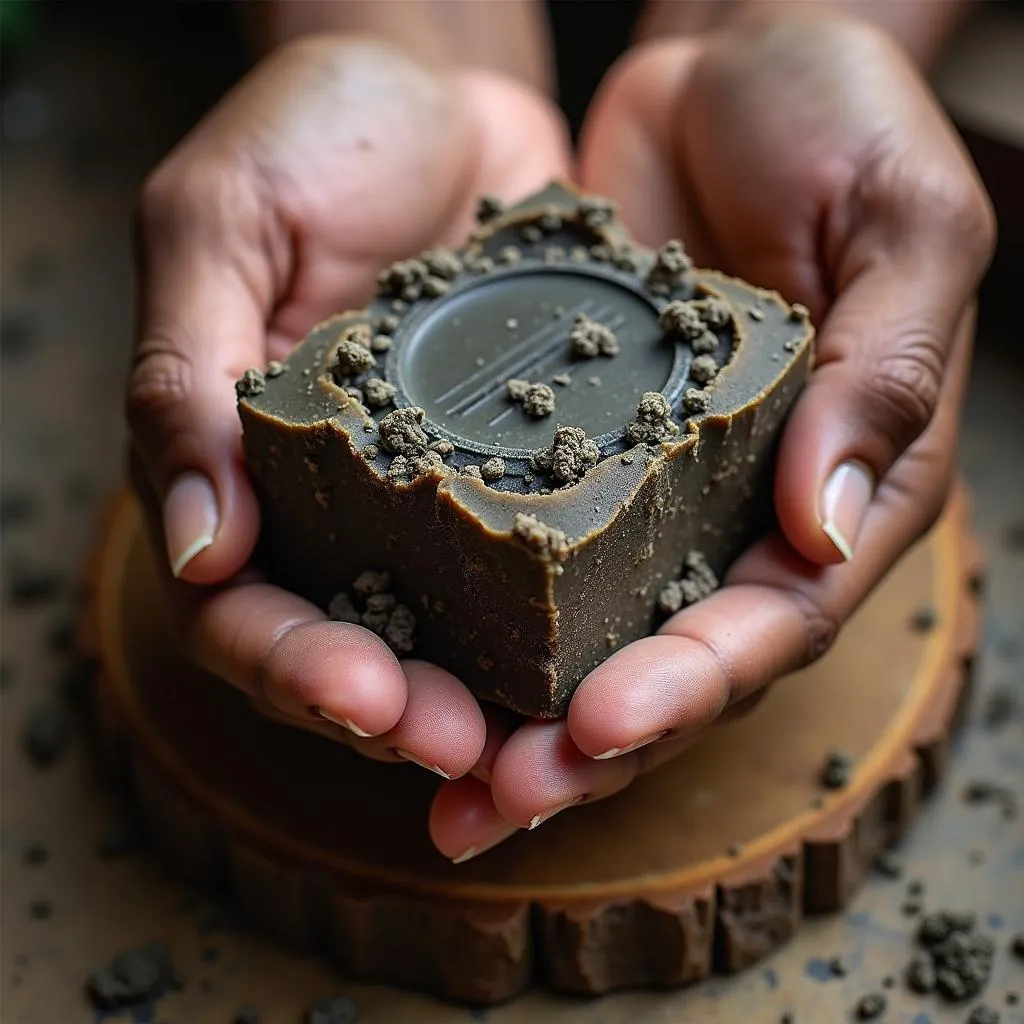Decoding the African Elephant Mouth: Teeth, Tusks, and Trunk
The African Elephant Mouth, a marvel of evolutionary engineering, plays a crucial role in the survival of these magnificent creatures. From their impressive tusks to their versatile trunks and specialized teeth, the anatomy of an elephant’s mouth is uniquely adapted to their herbivorous lifestyle. Let’s delve into the fascinating world of the African elephant mouth and uncover the secrets behind its form and function.
Inside the African Elephant’s Mouth: A Closer Look
The sheer size of an African elephant’s mouth is immediately striking. But beyond its impressive dimensions lies a complex system of specialized structures that work together seamlessly. The most prominent features, of course, are the tusks, which are actually elongated incisor teeth. These ivory appendages serve a multitude of purposes, from digging for water and minerals to stripping bark from trees and defending against predators. Moving past the tusks, we find the trunk, an incredibly dexterous extension of the upper lip and nose. The trunk is not only used for breathing and smelling but also for grasping food and bringing it to the mouth. Inside the mouth itself, the African elephant possesses a unique set of teeth designed specifically for grinding tough plant matter.
The African elephant digestive system, intricately linked to the function of the mouth, is a marvel of adaptation. Learn more about how elephants process their food.
Further down in the mouth are the molars, the workhorses of the elephant’s chewing apparatus. Unlike humans who have a continuous set of teeth throughout their lives, elephants have a unique system of tooth replacement. Throughout their lifetime, they have six sets of molars, each progressively larger than the last. As the old molars wear down, they are pushed forward and eventually fall out, replaced by new molars erupting from the back of the jaw. This ingenious system ensures that the elephant always has a functional set of teeth for grinding vegetation.
African Elephant Teeth: A Lifetime of Replacements
The process of tooth replacement in African elephants is a fascinating example of natural adaptation. Each set of molars is larger and more complex than the previous one, enabling the elephant to efficiently process increasingly tougher vegetation as it matures. This unique dental cycle allows them to thrive on a diet of grasses, leaves, bark, and fruits throughout their long lives. Interestingly, the last set of molars usually erupts when the elephant is in its forties or fifties, highlighting the importance of dental health for these majestic giants.
If you’re curious about how many teeth an African elephant has at any given time, you might be surprised by the answer. Learn more about it in this informative article: African elephant have how many teeth.
The Multifunctional Trunk: More Than Just a Nose
While not strictly part of the mouth, the trunk is undeniably integral to the elephant’s feeding process. This muscular appendage is remarkably versatile, capable of delicate movements as well as immense strength. It can pick up a single blade of grass with precision or rip branches from trees with powerful force. The trunk also plays a vital role in drinking, allowing the elephant to suck up water and then spray it into its mouth. This remarkable organ is a testament to the adaptability of the African elephant.
Tusks: Symbols of Strength and Vulnerability
The iconic tusks of the African elephant are both a blessing and a curse. While they provide valuable tools for foraging and defense, they have also made them targets for poachers. These magnificent appendages, made of ivory, have sadly fueled a devastating illegal trade that threatens the survival of these magnificent animals. Understanding the importance of tusks for elephants is crucial for raising awareness about conservation efforts.
You might be interested in learning more about African bush elephant tuskers, particularly those magnificent individuals with exceptionally large tusks.
Conclusion: The African Elephant Mouth – A Vital Tool for Survival
The African elephant mouth, with its specialized teeth, versatile trunk, and impressive tusks, is a remarkable adaptation that allows these magnificent creatures to thrive in diverse African environments. From grinding tough vegetation to manipulating objects with their trunks and defending themselves with their tusks, every aspect of the elephant’s mouth plays a crucial role in their survival. By understanding the intricate workings of the African elephant mouth, we can gain a deeper appreciation for these intelligent and awe-inspiring animals.
FAQ
- What do African elephants eat? African elephants are herbivores, meaning they eat plants. Their diet consists of grasses, leaves, bark, fruits, and other vegetation.
- How many teeth does an African elephant have? African elephants have six sets of molars throughout their lifetime, but only a few functional teeth at any given time.
- What is the purpose of an elephant’s trunk? The trunk is a multi-purpose organ used for breathing, smelling, eating, drinking, communicating, and manipulating objects.
- Why are elephant tusks so valuable? Elephant tusks are made of ivory, a material that has been highly sought after for centuries, leading to widespread poaching.
- How can I help protect African elephants? Supporting conservation organizations, raising awareness about poaching, and advocating for stricter laws against the ivory trade are all ways to help.
- How do elephants use their mouths to communicate? Elephants use a variety of vocalizations, including trumpets, rumbles, and roars, often accompanied by movements of their trunk and mouth, to communicate with each other.
- How long do African elephants live? African elephants can live up to 70 years in the wild.
Looking for more intriguing facts about African wildlife? Check out our article on African black animals. Discover fascinating details about other creatures that roam the African continent.
Need assistance? Contact us at Phone: +255768904061, Email: [email protected] or visit us at Mbarali DC Mawindi, Kangaga, Tanzania. We have a 24/7 customer service team.

